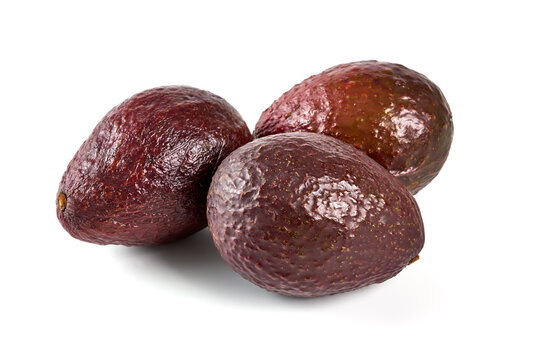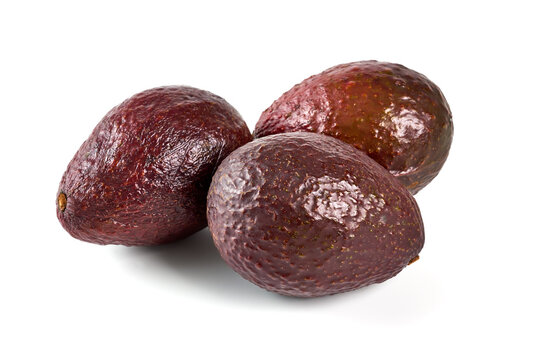Is Brown Avocado Safe Or Dangerous To Eat? – I’ll admit, I’ve definitely encountered many a mushy, browning avocado in my life. Although our first instinct might be to throw it away, committing this action could actually be a huge (wasteful) mistake because not all brown avocados are actually bad. In fact, most of them are perfectly safe to eat and not necessarily an indicator of spoilage. As the saying goes, you shouldn’t judge a book—or an avocado—by its cover.
Is Brown Avocado Safe Or Dangerous To Eat? 
In an effort to avoid ever having to waste a precious piece of fruit again, we spoke with a food scientist that has done endless research on the anatomy of an avocado to learn what exactly causes this change in appearance. Although most brown avocado cases are purely harmless, a few physical indicators can help distinguish the good, the bad, and the ugly (but totally edible) avocados from one another. Plus, we’ve included the best ways to keep your ‘cados at their peak freshness and a few tricks for telling if this tropical fruit is ready to eat before you crack it open.
Why a brown avocado is actually safe to eat
To learn more about why an avocado turns brown and if it’s safe to eat, we spoke with Savannah Braden, a biological scientist and the associate director of technology at Apeel Sciences, a food-tech startup that’s developed a plant-based coating that helps avocados and other fresh produce last twice as long. She revealed that although the slightly-browned flesh of the once vibrantly green fruit might not be as easy on the eyes, it’s simply a result of a safe (and naturally-occurring) chemical reaction known as enzymatic browning.
“There can be a few different causes of browning,” says Braden. “Internal browning of the flesh generally happens after you cut open an avocado because this disrupts the cells of the fruit, releasing enzymes that react with oxygen and other compounds in the fruit to create the brown coloring. While it may look a little ugly, it’s totally safe to eat an avocado that goes brown after you’ve cut it,” she reassures. So go forth and unabashedly nosh on the off-color areas of your guacamole without worry. Better late than never, am I right?
How can you tell if an avocado has really gone bad?
Although Braden says that most cases of a browning avocado are totally harmless, you may encounter one that has actually gone past the point of no return. To pinpoint them, Braden recommends looking for a few visual indicators to help detect the spoiled ones. “If the avocado is already brown once you slice into it, it’s likely something else is at play,” she points out. “It may have been stored in conditions that were too cold or too warm, or maybe it was dropped or bruised. In this case, you can always cut out or eat around the damaged flesh,” she says, which can spare you from having to toss out the whole thing.
Another pointer for inspecting an avocado is examining where the browning is stemming from… literally. “When browning starts from the stem end especially, it’s usually because of mold,” Braden says. Although the word mold might be alarming, she points out that even this type of browning isn’t much cause for concern. “There are several types of fungi that can infect an avocado, some invade from the stem, and some can dig through the peel. Stem end rot can start before the avocado is even grown if mold spores get introduced to the flower when it is pollinated.”
So does this mean you have to throw it away? Well, it depends. “If your avocado is brown near the stem, cut around the area if possible,” Braden says. “While the mold will not harm you, it can potentially change the flavor profile of the flesh of the avocado, so the brown parts won’t taste very good.” Best to throw it out.
How to prevent an avocado from browning even more
“When avocados are ripening, it’s best to keep them on a shelf out of direct sunlight and away from extreme heat or cold. When you buy Apeel-protected avocados, the bonus is that they keep their freshness and ripeness for longer without needing to be refrigerated. Apeel adds a layer of tasteless, odorless, plant-based protection on the surface that helps keep moisture in and oxygen out, which means produce lasts twice as long,” Braden says.
Looking for even more ways to assure your precious (and pricy) avocados never go to waste? We’ve got you. “After an avocado has ripened, it will start to decay or senesce. This decay process can be slowed by keeping avocados away from fruit that produces ethylene—a plant hormone that triggers ripening and then senescence in fruits—like bananas and tomatoes, and by putting the ripe avocados in the fridge,” Braden recommends. However, she cautions that keeping avocados in the fridge for too long can cause biochemical changes that will affect the flavor of the fruit.
How to tell if an avocado is ready to eat *before* you crack it open
“You can usually tell if your avocado is ripe by giving it a squeeze between your palm and fingers. If it has a mild give, it’s ready to eat. If it’s too firm, it may still be ripening. On the other hand, if it’s too squishy, it may be a little past its prime—but perfect for making guacamole,” Braden says. Like this TikTok video by user @athomewithshannon, Branden confirms that you can tell a lot about the ripeness of avocados by examining the stem.
“When avocados are very unripe and firm, the stem end ‘button’ will be very secure on the top of the fruit. But as the fruit ripens, this stem button loosens and will pop off easily once the fruit is nearly ready to eat,” Braden points out. Plus, in the TikTok above, Shannon Doherty shows that the color underneath the stem of the avocado can also indicate its level of ripeness—aka green equals perfectly ripe, and brown means not ready yet.
What does the skin color of an avocado indicate about the ripeness?
Braden cautions against determining the ripeness of an avocado based on its external appearance and skin alone. “The peel color can vary depending on the variety of avocado. For instance, Hass avocado peels change into a dark purple color once they ripen. [Meanwhile], other avocado varieties, like Fuerte, don’t change peel color as they ripen and simply get softer,” she says.
Aside from the variety of avocados, the amount of sun exposure while growing on a tree can also play a role in how the fruit is formed. “They can develop dark, even reddish, spots that can create an uneven ripening appearance postharvest. This does not indicate uneven internal ripening or internal fruit quality. These fruits can be just as good as the “perfect” looking ones,” says Braden.







Leave a Reply